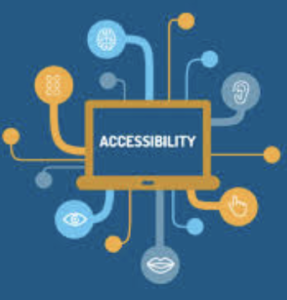Web Accessibility – Standards
A standard is a set of rules issued by an authoritative body in the field that must be followed to be “compatible” with the standard. It must be seen as a guarantee of quality and not as a regulatory constraint.
The W3C (Web Rules Authority) has published several standards to make the Web accessible to as many people as possible (understand “and persons with disabilities”). These rules apply to both websites and web applications. In the open Web, and beyond the classical (X)HTML and CSS, the W3C publishes standards for publishers and web developers to open to the disabled public (motor, sensory, handicapped, mobility impaired, senior,…). It is done so that everyone can consult the websites as easily and quickly as possible. Let’s see how all this is organized.
Internationally
W3C (World Wide Web Consortium)
It is the non-governmental organization responsible for establishing Web technology since 1994. It has its recommendations standardized by ISO.
WAI (Web Accessibility Initiative)
In 1997, the W3C created this working group to draft specifications on the accessibility of the Web and its technologies. It is this group that will develop the standards presented below.
WAI-ARIA (Web Accessibility Initiative – Accessible Rich Interactive Applications)
ARIA is an extension of the WAI standard, which is officially only in draft form (at the moment we are writing these lines…). It adds semantic and metadata markers to HTML content to make the interface and content more accessible, especially for technical support tools such as screen readers. This extension is particularly useful for HTML 4 (apparent before ARIA) which does not deal with semantics as such.
The WAI specifies that ARIA must be used only if the standard (“HTML”) does not already include semantics management; for example, HTML 5 (in its current draft version) starts to take semantics into account, the ARIA extension should soon be obsolete.
Note that HTML validators (< HTML 5) do not take into account the ARIA extension and will return errors; however, browsers and screen readers handle ARIA well and will prefer reality to theory to develop accessible pages.
WCAG: Web Content Accessibility Guidelines
This standard, undoubtedly the most important concerning accessibility, is broken down into three levels (increasing accessibility rated from A to AAA – AAA being extremely difficult to reach). The higher you go up in the levels, the stricter and more meticulous the rules, and the more accessible your website is to as many people as possible. Experts agree that the AA level is already sufficient for a large and complex site. Version 2.0 is the current reference.
Four main rules:
 Perceptible: any nontextual content (image, video, form element, CAPTCHA…) must then have a textual alternative of precision or description. It is also useful for screen readers who can only interpret text (content and HTML/CSS code). It is also necessary to use shapes and colors to distinguish the material from the shape, the foreground from the background, to play on the contrast of colors and the size of the text. The sounds must also be recorded with a soft background (difference >= 20dB).
Perceptible: any nontextual content (image, video, form element, CAPTCHA…) must then have a textual alternative of precision or description. It is also useful for screen readers who can only interpret text (content and HTML/CSS code). It is also necessary to use shapes and colors to distinguish the material from the shape, the foreground from the background, to play on the contrast of colors and the size of the text. The sounds must also be recorded with a soft background (difference >= 20dB).
Usable: make all user interface and navigation elements accessible to the mouse and keyboard. This is important when using technical support tools.
Understandable: Visitors must be able to understand the information as well as the operation of the user interface, therefore readable (the content or operation cannot be beyond their comprehension).
Robust: the content must be made in such a way that it will be presented and accessible in the same way to everyone regardless of the navigation tool used (and its future evolutions).
ATAG (Authoring Tool Accessibility Guidelines)
This standard for developers describes accessibility rules for web content creation tools. For example, a site creation tool (CMS – Content Management System) must comply with these standards. Let’s note that the rule recommends making the tool accessible but not the content it generates (that’s the job of WCAG); in a perfect world, we would have both…
UAAG (User Agent Accessibility Guidelines):
These are the rules that must be followed by developers of user agents (see paragraph on “User Agents” below), i. e. the software used to access web content (classically a browser, but not only).
